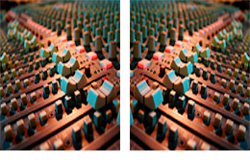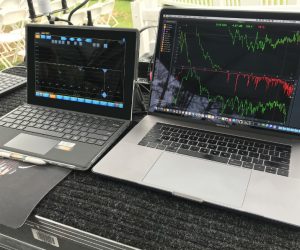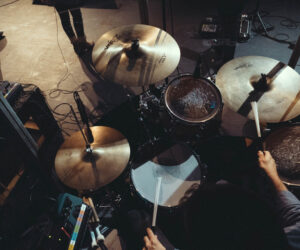For any church that offers a contemporary service involving a praise ensemble, and even those presenting more traditional services that involve a substantial choir, it may be necessary to provide monitoring for the musicians and singers so that they may hear themselves and their colleagues.
Assuming that the sound system supports more than simple voice reinforcement and includes sufficient microphones, amplification, loudspeakers and a mixing console, how can a church engineer provide monitoring without substantial financial outlay?
For those unable to spend thousands of dollars on a dedicated monitor desk, or one of the dual-purpose consoles available from several manufacturers, the good news is that it is possible for the majority of front of house consoles to do double-duty.
There are a number of different ways that monitors may be provided from the house console, including using the auxiliary sends or using the matrix outputs.
But while the matrix outputs typically source the subgroups and therefore individual inputs that have been grouped together, using the aux sends allows the level of each input source to be adjusted individually for each separate monitor mix.
Aux send controls have several functions. They can be used to control the levels of the signal going to effects units, to drive subwoofers, as feeds to an external recording device, and to create separate onstage monitor mixes.
The simplest and best method for creating monitor mixes from the house console is to use aux sends selected to be pre-fader and preferably pre-EQ. This means that any changes in level or EQ in the main sound system will not affect the monitor feeds since they are sourced, and their levels controlled, before each input channel EQ section and fader.
Allowing those changes to also affect the monitors would be undesirable and could be disastrous. Rolling off a little of the high frequencies on the drum kit in the main system will not necessarily improve the sound in the monitor loudspeakers. And raising the level of a vocal in the house system will increase the level in the monitors and could lead to feedback.
Whether or not, and exactly how, a console can switch the aux sends between pre- and post-fader and pre- and post-EQ depends entirely on the desk model and manufacturer. Some consoles switch pre/post-fader in pairs of aux sends, or banks of four, or even globally—and some not at all.
Pre/post-EQ switching may be similar, and on some consoles is achieved via individual switches on the input circuit boards, not the console faceplate. Consult the console operation manual or the manufacturer if in doubt. If you intend to purchase a new console for the purpose of mixing both front of house and monitors then this is something to keep in mind.
The total number of aux sends available and that may be switched pre-fade/pre-EQ will dictate how many individual monitor feeds may be set up. Keep in mind that you may wish to retain some of the auxes for effects sends in the main system, to drive subwoofers or to feed a recorder.
If the console design dictates that all the aux sends must be set to pre-fader then the effects sends will be, too. This means that unless you run your input faders around ‘0′ then your input channels will be very effects-heavy. The more adventurous and technically proficient may wish to modify their FOH console to meet the challenge of also mixing monitors.
Sending a monitor mix to the stage without EQ is not perfect, but is preferable to a post-EQ mix that changes during the service as the FOH engineer makes adjustments to the main sound system. In order to EQ each mix it is possible to insert an outboard equalizer into each monitor feed.




















